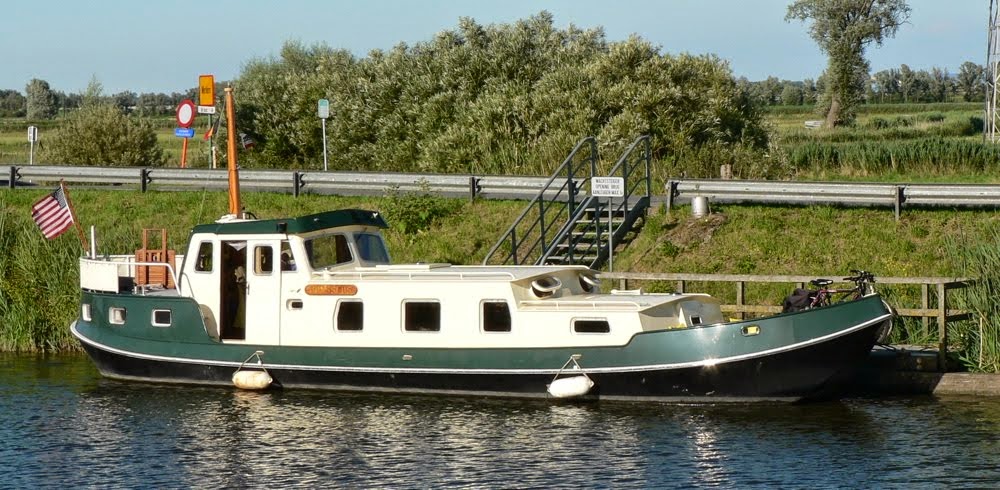The village of Accolay is on a 3 km long side canal that branches off the Nivernais and heads over the the Cure River in Vermenton. We stopped for the night in Accolay and rode our bikes down the excellent tow path to Vermenton and back in the afternoon.
 The Accolay halte.
The Accolay halte.The Nivernais is one of the most beautiful, and most popular, canals in France for cruising. There is no commercial traffic because the canal is small, shallow and some of the locks near the top smaller than the standard 39.5 meters long and 5 meters wide. Also there are some really low bridges.
The canal was originally begun in the late 1700's but because of the difficulty of it's construction, wasn't completed all the way through until 1842. The section we are on now parallels the Yonne River, occasionally sharing it's banks. Major commercial traffic during the canals heyday was wood carried from the Morvan forests to Paris for construction and firewood. As commercial river traffic dwindled throughout France, many canals were abandoned. Here I'll quote from one of our bibles, "Cruising French Waterways," by Hugh McNight
"One of the key factors in saving this ravishing navigation for posterity was Roger Pilkington's voyage on his motor yacht Commodore, which was so beautifully described in Small Boat Through France (1964). But the decisive event that determined the canal's future was brought about by waterways enthusiast Pierre-Paul Zivy, an Anglophile who had cruised rivers and canals in England and established the first inland hire cruiser fleet in France on the Marne (in Chateau Thierry. We visited in June. dc) Having obtained assurances that neglected maintenance would be tackled by the authorities, he set up his Saint-Line cruiser base at the Baye summit level in 1964 and campaigned for the threatened section to be transferred to the local Department. This act was astonishingly courageous and foresighted. It would be another five years before the second such boat operation appeared on the Canal du Midi. There are now many holiday boat firms and hotel barges using the Nivernais, not forgetting private craft. The canal has become of of the most popular routes in the network..."
We can speak to the canal's popularity. Those hire boats are everywhere, mostly captained by people who have never driven a boat before. Since we're steel and they're fiberglass, they are more bothersome than dangerous, though they do provide endless hours of entertainment.

Our next stop was about 20 km down the canal; the village of Mailly le Chateau and, yes, there is a chateau.

 And the village below.
And the village below.The canal here parallels the Yonne River, which was visible from the chateau.

It was Sunday afternoon and the village was hosting a petanque tournament. The game is much like lawn bowling except no lawn and the balls are made of steel. Usually it's a game for the retired set but we saw an old master sharing his wisdom with some up-and-comers.

Since our travel days are so short, these villages so small and the days still pretty long, we usually just spend the afternoon in a place and then move on the next morning, as we did here. Next stop, The Rochers du Saussois.


















































